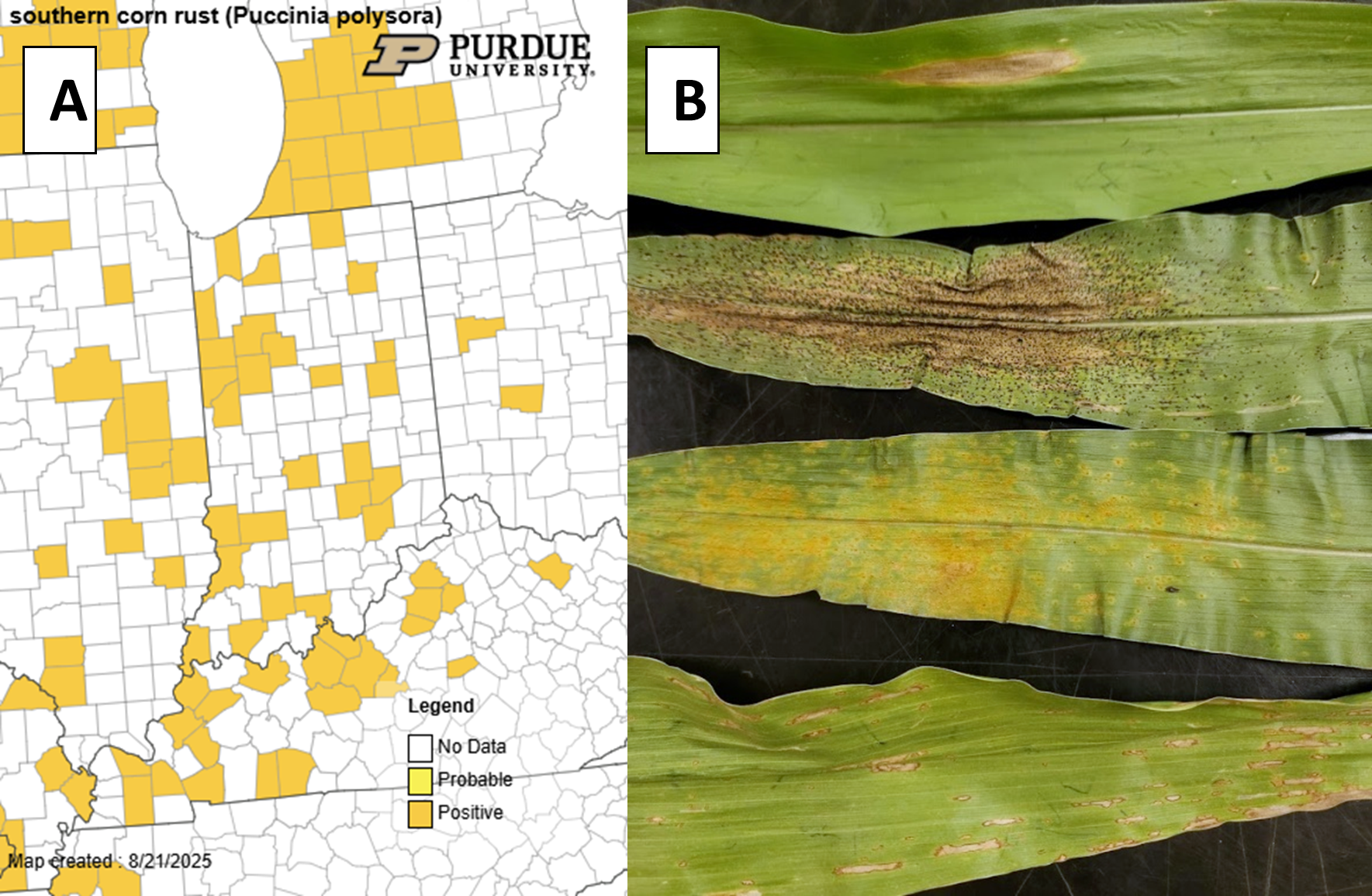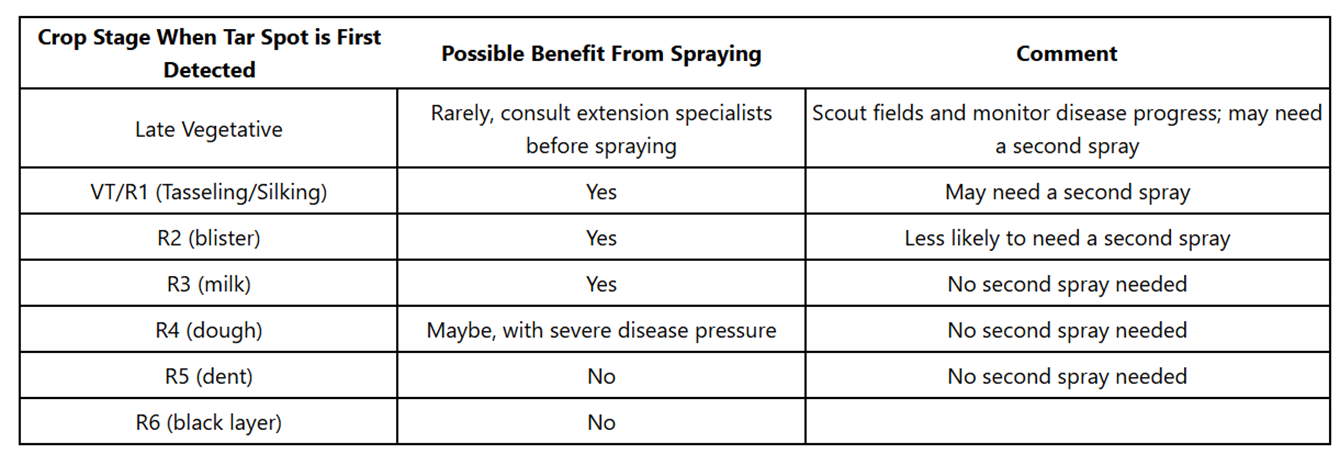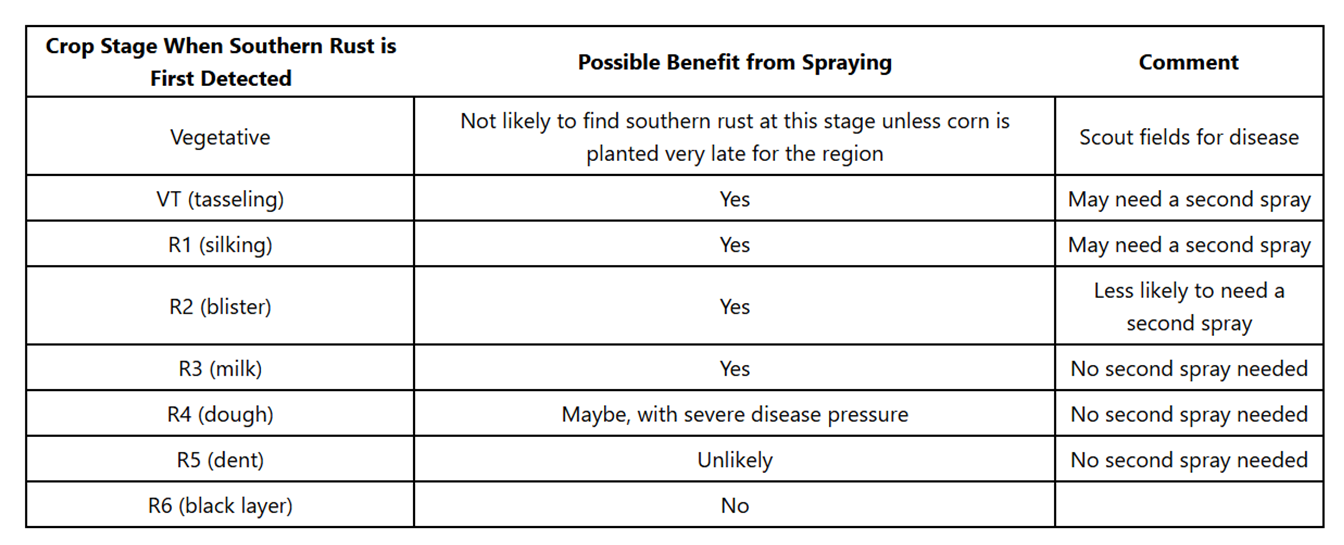A number of foliar diseases have made an appearance in corn across Indiana. Southern corn rust has now been confirmed across the state it is highly possibly that pockets of southern rust can be in found in your corn fields (Figure 1A). If you haven’t seen it yet I suggest getting out to look – we would love to get a few leaf samples from those counties not turned yellow on the map. In our research site up in Porter County (Wanatah, IN) we found four of the major foliar diseases northern corn leaf blight, tar spot, southern rust and gray leaf spot (top to bottom in Figure 1B).

Figure 1A. August 21, 2025 map of southern rust (Puccinia polysora) and 1B. foliar disease examples of northern corn leaf blight (top leaf), tar spot, southern rust and gray leaf spot (bottom leaf) found in one of our fields.
Tar spot can be found in many fields, but due to environmental conditions has not move rapidly into the upper canopy. I suspect that will change now in the next couple of weeks (Figure 2).
I know there are still some questions on if a fungicide application should be made. A fungicide application can be effective at reducing disease and protecting yield, but there are a number of factors that need to consider. Here are my thoughts on what to consider.
- Amount of disease present in the field – what diseases do you find? Where are they in the canopy and how widespread?
- What is the growth stage? if the corn is at dent then no fungicide is necessary (see Figures 3 and 4)
- If there’s over 5% disease at the ear leaf let it go as you won’t slow the disease down at this point.
- Current weather conditions (use the forecasting tools https://cropprotectionnetwork.org/crop-disease-forecasting )
- The value of the crop and cost of fungicide application.
Figures 3 and 4 are handy tables to assist in making a fungicide decision based on our university data.

Figure 3. A decision table for tar spot outlining possible benefits from applying fungicides based on when disease is first detected in a field and crop growth stage. Source: Crop Protection Network https://cropprotectionnetwork.org/maps/tar-spot-of-corn

Figure 4. A decision table for southern rust outlining possible benefits from applying fungicides based on when disease is first detected in a field and crop growth stage. Source: Crop Protection Network https://cropprotectionnetwork.org/maps/southern-corn-rust
We are still documenting tar spot and southern rust as it is important to understand the disease distribution and severity across Indiana. All sample costs will continue to be covered for both these diseases and any others you might find in your corn or soybean fields. It is extremely important to know if this disease is present in your fields to implement disease management tools if necessary.
If you observe tar spot or southern rust in a county that has not reported this season or would like to share what you have been seeing on your farm, then please send a sample to the Purdue Plant Pest Diagnostic Lab (PPDL) https://ag.purdue.edu/btny/ppdl/Pages/Submit-A-Sample.aspx or contact me for further information (dtelenko@purdue.edu ).




